Woodworking projects are varied, but one of the most critical decisions is choosing the right type of wood. The final piece's strength and beauty are determined by the sort of wood you would choose. Different types of wood are frequently needed for diverse design projects. Determining which materials are best suited for a given design requirement can be made easier by being aware of the distinctions between different natural species that are used for woodworking. This article covers a wide variety of regularly used woods which will help you choose the wood you are looking for, whether you are making anything out of wood or just buying wood furniture for your house.
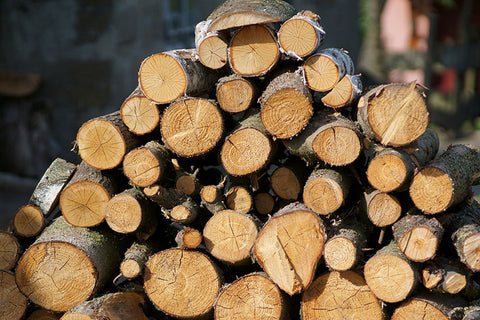
Three basic characteristics to identify wood
Wood can generally be identified by 3 basic characteristics of wood: its hardness, grain, and color.
There are two types of wood basically: softwood and hardwood. Botanically, hardwoods and softwoods are the two classifications of trees. Nevertheless, hardwoods and softwoods are not solely based on the softness or hardness of the wood's grain. The terms "soft" and "hard" are relative. For historical reasons, not all hardwood trees are hard. These terms only indicate their classification, not the actual hardness of the wood. Historically, in the medieval timber trade, when loggers cut down trees for building materials and fuel they found trees like oaks harder to cut, so they called them hardwoods. On the other hand, pine trees were easier to cut, so loggers called them softwoods. Most of these hardwoods also happen to have broad leaves and flowers, which are genetic traits and are eventually used by scientists to categorize trees into taxonomic groups of angiosperms. So "hardwood," a name based on physical attributes - and "angiosperms," a name based on genetics, became synonymous. The term "softwood" was mostly applied to trees with needle-like leaves and unencased seed, traits used by taxonomists to categorize trees as "gymnosperms." These colloquial terms and taxonomic terms are usually consistent, and angiosperms (AKA hardwoods/broadleaf trees) are, on average, harder than gymnosperms (AKA softwoods/conifers). Thus, the true hardness of hardwoods and softwoods varies widely, with most species overlapping each other, and even some hardwoods being softer than most softwoods. For example, there are some hardwood trees that you’re probably thinking of a tree like oak, whose hardwood is used for making sturdy furniture and long-lasting campfires. Balsa hardwood is softer than most softwoods. Balsa is lightweight, some might even say soft wood that people use for making model airplanes. Therefore, hardwood doesn’t mean that the wood is hard.
Generally speaking, as hardwoods typically grow slower than softwoods, their pores are visible at a microscopic level, resulting in wood with a more pronounced grain. In this case, hardwoods have a more distinctive and luxurious grain pattern than softwoods, and show a great variety of colors. Besides, uniquely grained wood is usually more expensive, and wood with poorly defined grain is often stained to give it character. They are most commonly used for high-quality furniture, decking, flooring, and construction. Although they can be more expensive and perhaps more difficult to handle, hardwoods often have longer service lives due to their higher density. Softwood, on the other hand, is more easily harvested and has a finer grain, making it suitable for less costly wood goods like furniture, MDF, and window components. Their growth rate also affects their inherent fire resistance: hardwoods are usually more inherently fire resistant, while softwoods are usually more flammable. Hardwood's higher density and lower moisture content contribute to its greater fire resistance compared to softwood. Because of its lower moisture content and density, hardwood is less prone to catch fire which makes it harder for flames to get through the fibers and burn the wood.
It matters what kind of wood you use
Every type of wood has its unique properties and traits that make it more or less suitable for different uses. Choose the wood option that best fits your project and budget by exploring the many wood types. Several commonly used hardwood and softwood types are described below.
Hardwood
Common hardwoods among wood types include Ash, Birch, Cherry, Mahogany, Aspen, Hard Maple, Oak, Poplar, Teak, and Walnut. Listed below are a few common hardwoods and their characteristics.
Oak
Oak is a strong hardwood suitable for flooring and furniture. Oak trees-whether red or white, are common trees in the United States and Canada. Oak is well suited for use in humid climates. It is a low-porous wood and is commonly used in the construction of boats. Oak is a fairly durable wood and absorbs oil well. White oaks and red oaks are two common varieties. They are very strong and dense with straight and wide grain patterns. Meanwhile, When it comes to workability, White Oak and red oak prove to be a perfect material that can be worked effortlessly with sharp steel or carbide blades and bits without the risk of scorching. Despite that, there are some distinct differences between white oak and red oak, so you'll need to pay attention to the details when making your purchase. The biggest difference between them is their color. White oak ranges in color from yellow to cream tints, whereas red oak has a redder hue. Besides, white oak is more expensive than red oak and has better moisture resistance. For this reason, white oak is an excellent substitute for teak in outdoor furniture.
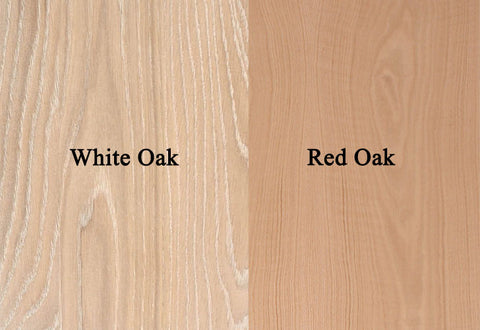
Best uses: Indoor and outdoor furniture, boat building (white oak), trim, flooring, cabinetry, plywood, and veneers.
Cost: Modest (red oak), modest to expensive (white oak)
Cherry
Cherry is a medium hardwood suitable for furniture making, it is common throughout the United States and Canada. It is characterized by a beautiful grain and is easy to stain and carve, making it suitable for use indoors and in environments. With an excellent fine grain-pattern, coupled with a smooth texture, Cherry exudes a sense of refinement that transcends trends. One of Cherrywood's unique traits is its propensity to darken gracefully over time when exposed to sunlight, adding depth and richness to its allure. While Cherry wood machines easily with sharp steel or carbide blades, it is more susceptible to machine burns, requiring careful handling during processing. However, the results are well worth the effort, as Cherry Wood graciously takes stains and clear finishes, allowing you to showcase its natural beauty with clarity and precision.
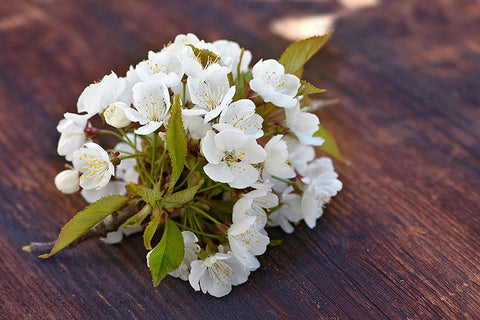
Best uses: Indoor furniture, architectural woodwork, cabinetry, musical instrument, carving, turning, plywood and veneers.
Cost: Modest
Walnut
Walnut, one of the higher quality types of wood, is mainly produced in the Eastern United States and Canada. Its characteristic straight, fine grain exudes a sense of refinement, while its moderate weight adds substance to any project. With a color range spanning from dark brown to purple or black, Walnut wood adds depth and richness to your creations, infusing them with sophistication and allure. When it comes to workability, cutting and drilling are easy with sharp tools, without the risk of burning, ensuring precision and quality in every detail. We do not advise using this hardwood for outdoor woodworking projects because, while very resistant to decay, it is not resistant to insect damage. In place of shrinking and warping, walnut wood can be used to create indoor furniture or cabinetry.
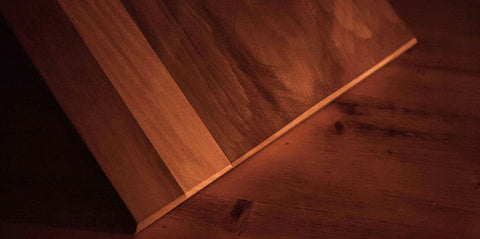

Best uses: Indoor furniture, woodturning, cabinets, carving, musical instruments, clocks, boat-building.
Cost: Modest
Honduras Mahogany
Grown in West Africa, the West Indies, and Central and South America, mahogany is a hardwood of the highest quality. Mahogany is a reddish brown wood with a straight, interlocked fine grain, therefore mahogany is a great material for furniture. However, as an exotic hardwood in danger of extinction, mahogany's use has decreased over time. With exceptional workability, Honduras Mahogany effortlessly yields carbide blades and bits, facilitating seamless machining for flawless results. Honduras Mahogany is prone to cutting but requires proper surface treatment. When it comes to finishing touches, this exquisite wood readily takes stains and clear finishes.
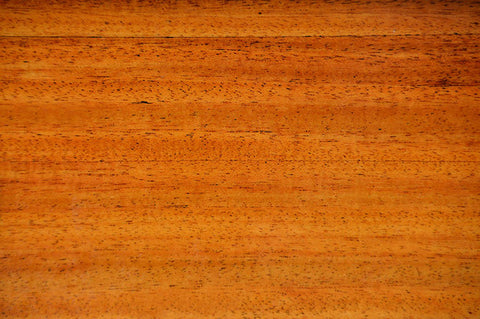
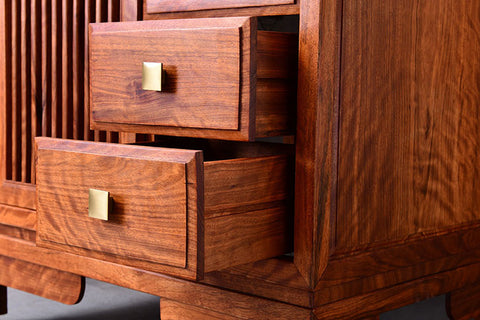
Best uses: Indoor and outdoor furniture, pattern making, veneers, and trim, custom cabinetry, boat-building, and high-end flooring.
Cost: Modest
Hard maple
There are two types of maple: soft and hard. Both kinds are more durable and tougher than a lot of other woods. Hard maple has a straight, wide grain, occasionally adorned with bird's eye or fiddleback figures. It is so hard (a 5 on a scale of 1 to 5) that it's difficult to machine without carbide blades and bits to avoid burns from dull blades. The opposite is true for soft maple. Concerning finishing performance, hard maple graciously takes clear finishes, although staining may produce blotches, requiring careful attention to detail.
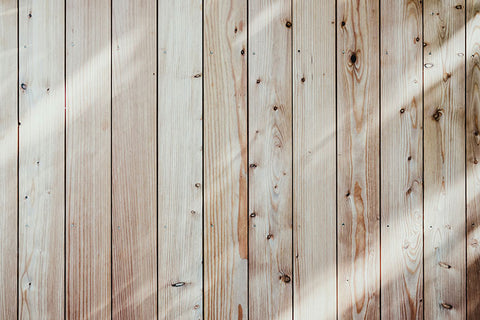
Best uses: Cabinets, indoor furniture, trim, flooring, kitchenware, butcher block countertops, instruments, piano frames, plywood, and veneers.
Cost: From modest and costly, depending on the figure
Softwood
Common softwoods among wood types include White pine, Fir, Western Red Cedar, Redwood, and Cypress. Listed below are a few common softwoods and their characteristics.
White pine
Pine is the most widely used type of wood in the world. Numerous varieties of pine exist, such as southern yellow pine, ponderosa pine, white pine, and sugar pine. White pine has a straight grain with an even texture and tight pores. It is the wood of choice in several regions of the nation, particularly in the United States and Canada. Pine is an exceptionally softwood that is very simple to work with. White Pine offers exceptional machinability, effortlessly engages sharp steel or carbide blades and bits, making machining a breeze, and is also flame resistant. White Pine has a lower resin content than comparable products, so the cutting edge stays cleaner for longer. This type of wood takes clear finishes and paints well. However, caution is advised when staining, as white pine may blotch without the use of a stain controller.
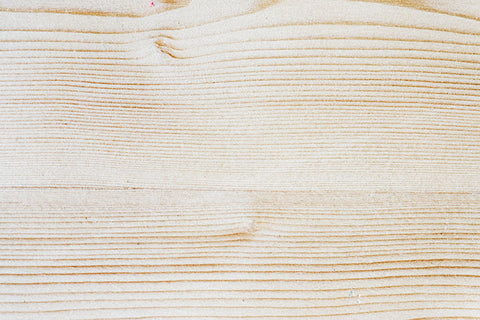

Best uses: Indoor furniture, flooring, windows, paneling, plywood, veneers and trim, construction lumber, musical instruments.
Cost: Inexpensive
Western Red Cedar
Red cedar is the most prevalent species of cedar. Western Red Cedar is a common tree species in the rainforests of the Pacific coast of northwestern North America and the interior of British Columbia. This tree is one of the longest-lived and most resistant North American softwood species to rot and insect infestation. As a result, it can grow to enormous sizes. Western Red Cedar lumber is lightweight, uniformly grained, has a straight grain, and contains no resin. All of these properties make the wood easy to work with. For applications requiring strong decay resistance, dimensional stability, and good insulating values, Western Red Cedar is the recommended species for use. Thus Red cedar is an ideal material for outdoor furniture and construction. While its soft composition facilitates easy machining, the end grain remains susceptible to splintering and tear-out, necessitating careful handling.
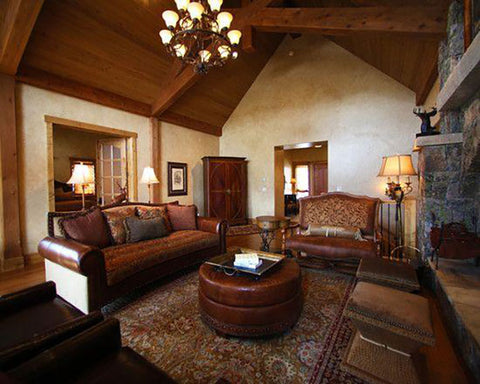
Best uses: Outdoor furniture, fence, exterior millwork, decks. Chests, interior and exterior siding.
Cost: Inexpensive to modest
Redwood
Redwood is a durable softwood with a moderate resistance to moisture and a strong resistance to rot and insects. This type of wood mainly grows on the West Coast of the United States. This is a great choice for the outside as well as the inside. It's a great softwood that works well for a wide range of wood crafts. Softwoods are easy to deal with with both hand and machine equipment. This type of wood has a straight, fine grain with few knots or blemishes. Moreover, redwood is favored for its rich, naturally occurring hue, which ranges from pink-brown to deep reddish-brown. Furthermore, the ongoing exploitation of redwood trees contributes to its relative cost. Over the past few decades, there has been a decline in the redwood tree population.


Best uses: Outdoor furniture, decks and fences, musical instruments, trim, and veneers.
Cost: Modest to expensive
Cypress
Cypress is a durable, stable, rot-resistant wood, making it popular for outdoor construction including decks, siding, and fence posts. Cypress is typically harvested from the Mississippi Delta region of the United States. It has a straight, even grain pattern with low resin content. This type of wood machines well, sands and planes easily. Because cypress wood has a light color, stains are easily held on it. When cypress wood ages and is exposed to UV radiation, it becomes silvery gray. However, discoloration is a frequent issue with Cypress (nearly all wood species) owing to continuous exposure to sunshine and dust.
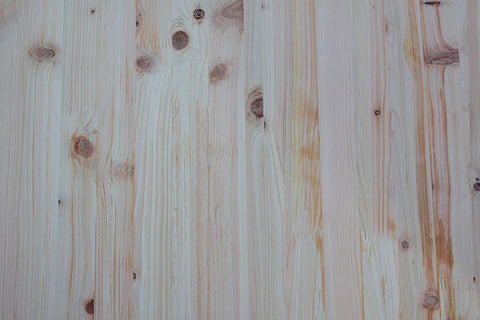
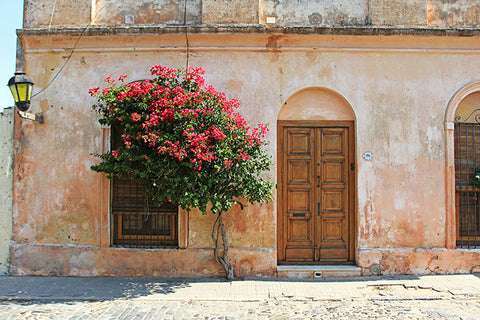
Best uses: Docks, boat building. interior and exterior trim, exterior construction, beams, flooring, cabinetry, etc.
Cost: Inexpensive
Choice of types of wood
Whatever wood you choose, make sure it is suitable for the particular situation in which it will be used.
Moisture content and cutting affect the quality of wood. Wood is a moisture-sensitive material. It is naturally high in moisture content when it is freshly cut, and will go through a drying process after sawing. When wood gets wet, it expands, while drying causes shrinkage. The moisture content of wood ranges from 8% to 24%, and it is recommended that drier wood be used indoors as the indoor air humidity is low, which also applies to carpentry, furniture, and log cabin construction.
The most important consideration when choosing wood is its end use. Is it for outdoor decks, wood floors, or saunas? For example, if you use wet wood in a dry hot sauna, it will shrink. For the same reason, interior doors and furniture are made from drier wood. The gluing process in woodworking also requires dry wood.
The type of wood has an impact on where it works well as well. Certain types of wood are more appropriate for outdoor applications due to their increased resistance to moisture, rot, or insects. It is best to use pressure-impregnated, heat-treated, or moisture-resistant wood outside. Some treated hardwoods (e.g., Ash, Oak, Maple) are significantly more resistant to moisture, rot, and insects through the pressure-impregnated or heat-treated process. This can lead to excellent outcomes that treated hardwoods have both the natural beauty and strength of hardwoods and increased resistance to environmental elements. They are suitable for use in a variety of outdoor scenarios including decking, fencing, and outdoor furniture. The usage of untreated wood outdoors is not suggested. Especially when pine is infected with blue discoloration fungus, it turns blue and starts to mold. If treated or altered appropriately, wood has a higher resistance to moisture and humidity.
To sum up, choosing the right type of wood is critical to the success of any woodworking project. The choice of wood will affect not only the aesthetics of the final product, but also its durability, workability, and functionality. In addition, pairing selected lumber with appropriate tools, can greatly improve efficiency and overall quality. Findbuytool, as an online shopping store, provides high-quality Wood & Metal tools for affordable prices. We have long insisted on providing our customers with high-quality carbide tools (e.g. helical cutter head and carbide indexable blades). The synergy between the wood and the tools used not only improves the workflow and progress but also the quality of the final product. Therefore, investing time and effort in wood and tool selection is critical to a successful and satisfying woodworking experience.

